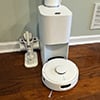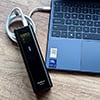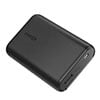Updated on 11/14/2023 with WiFi calling availability by additional carriers.
You can make calls and receive texts on your Android phone using WiFi calling, even when you can't get a cell phone signal. Instead of using your carrier's cellular network, WiFi calls and texts are routed through whatever WiFi network your Android phone is connected to. This means you remain reachable in subterranean office levels, meeting room dead zones, and other areas with good WiFi but no cellular signal.
What you need for WiFi calling
WiFi calling has to be supported on your phone and by your carrier to work. The major U.S. carriers all support WiFi calling (AT&T, T-Mobile, and Verizon), as well as many smaller carriers, including US Cellular and Xfinity. And while WiFi calling once was a postpaid plan perk, WiFi calling is available now for most prepaid customers.
In terms of hardware, WiFi calling is generally available on Android phones that have been manufactured since 2015. If your phone is unlocked and not originally built to work with your carrier, you may not be able to take advantage of WiFi calling.
How to activate WiFi calling
WiFi calling isn’t automatically enabled on Android phones. It's easy to turn, but the instructions are slightly different depending on your phone manufacturer.
For stock Android phones, like the Google Pixel phones:
- Open the Phone app.
- Tap the triple dots to open the menu and select Settings.
- You may see Wi-Fi Calling, where you can toggle on the feature. Or, you may need to select Calls first, and then you'll see the option to toggle on the feature.
For Samsung phones:
- Open Settings.
- Select Connections.
- Toggle on Wi-Fi Calling.
For all other manufacturers, if they are using the standard Google Phone app (which they likely are), follow the instructions above for stock Android phones. If these instructions don't work, open Settings, select the search magnifying glass, and type in "Wi-Fi Calling." You should be taken to the correct setting.
How to make a WiFi call
Once you activate WiFi calling, you dial or text as usual. The routing of your call or text is handled automatically in the background.
If you make a 911 call, you should always provide your address to the emergency operator. Emergency services will not automatically receive your location information as they would if you're using the cellular network.
WiFi calling costs
The WiFi calling feature doesn't cost anything extra, but the same rates and fees that apply to your regular cellular calls also apply to WiFi calls. This includes deducting minutes from your monthly allotment, if you don't have an unlimited plan, and fees for calls made to international numbers.
WiFi calling is perfect for overseas travelers because there’s typically no roaming or international charge for making calls or sending texts back home. Many carriers' plans include free calling to Canada and Mexico. Keep in mind, though, that you will be charged a rate based on your international calling plan if you call an international line using your U.S.-based smartphone. Also, WiFi calling isn’t supported in some countries, including China, Cuba, and North Korea.
Check out the WiFi calling pages on your carrier's site for full details on included features, limitations, and charges:
Need to set up an iPhone for WiFi calling? Check out our story on How to Use WiFi Calling on Your iPhone.
[Image credit: main in waiting room via BigStockPhoto]
For the past 20+ years, Techlicious founder Suzanne Kantra has been exploring and writing about the world’s most exciting and important science and technology issues. Prior to Techlicious, Suzanne was the Technology Editor for Martha Stewart Living Omnimedia and the Senior Technology Editor for Popular Science. Suzanne has been featured on CNN, CBS, and NBC.














From Geoff on March 12, 2020 :: 10:04 pm
Just a small amendment to your excellent article. In Australia Wi-Fi calling is provided by the main carriers for calls within Australia, however not for international calls.
Reply